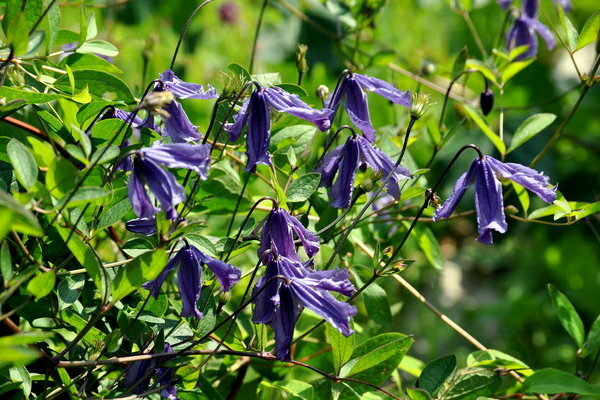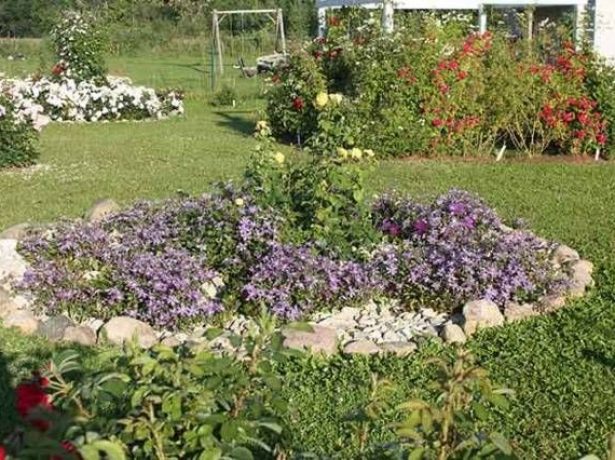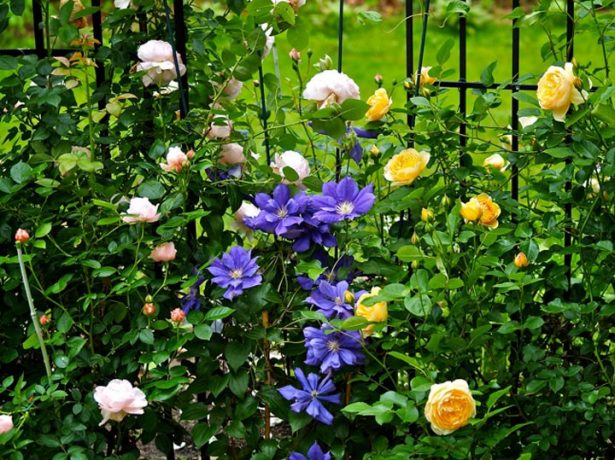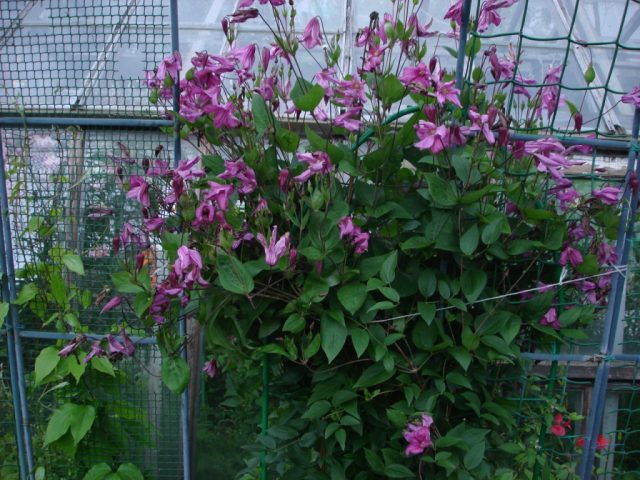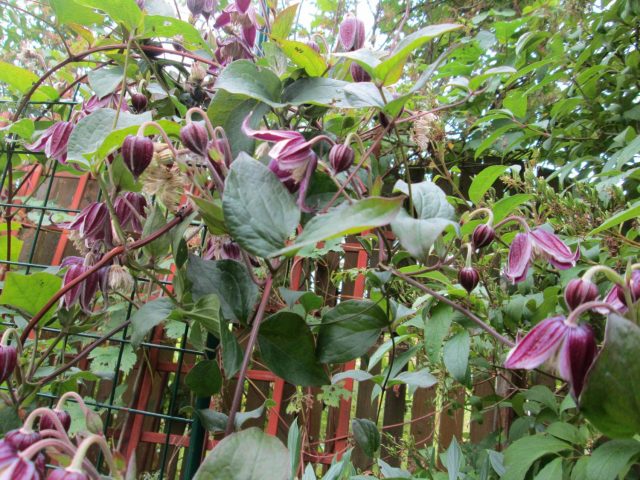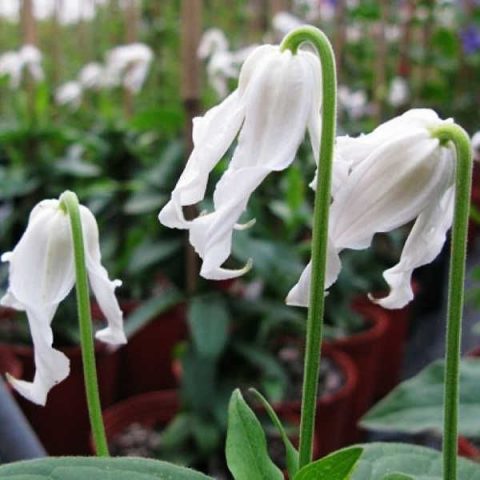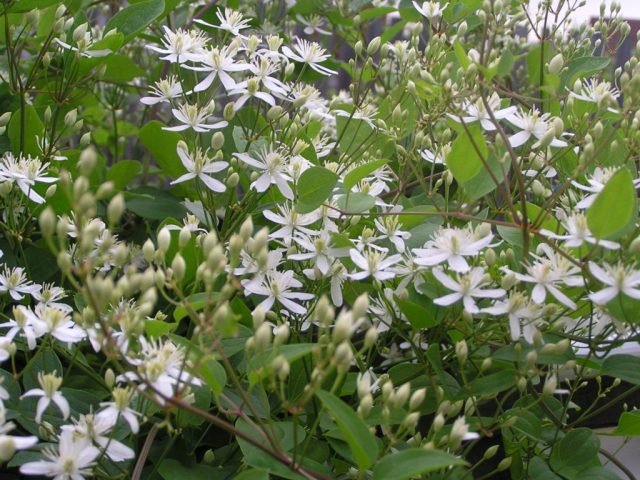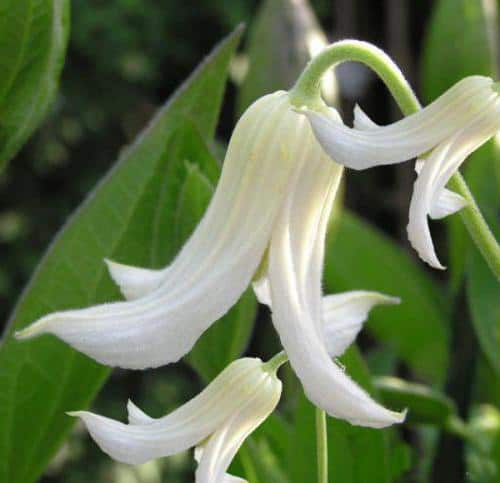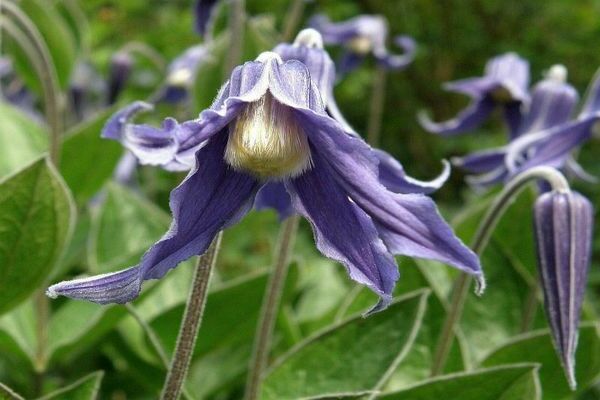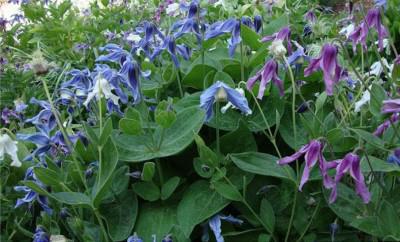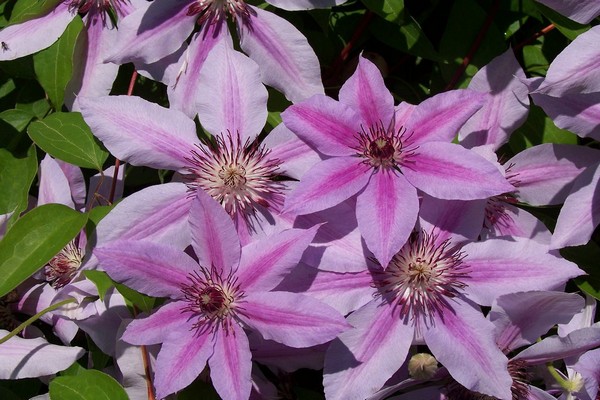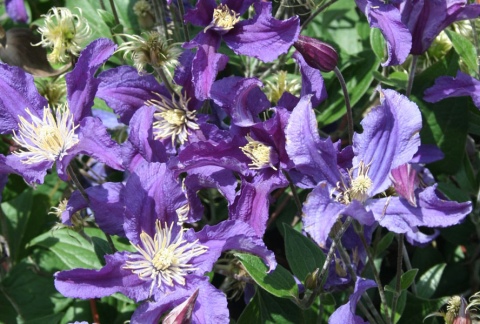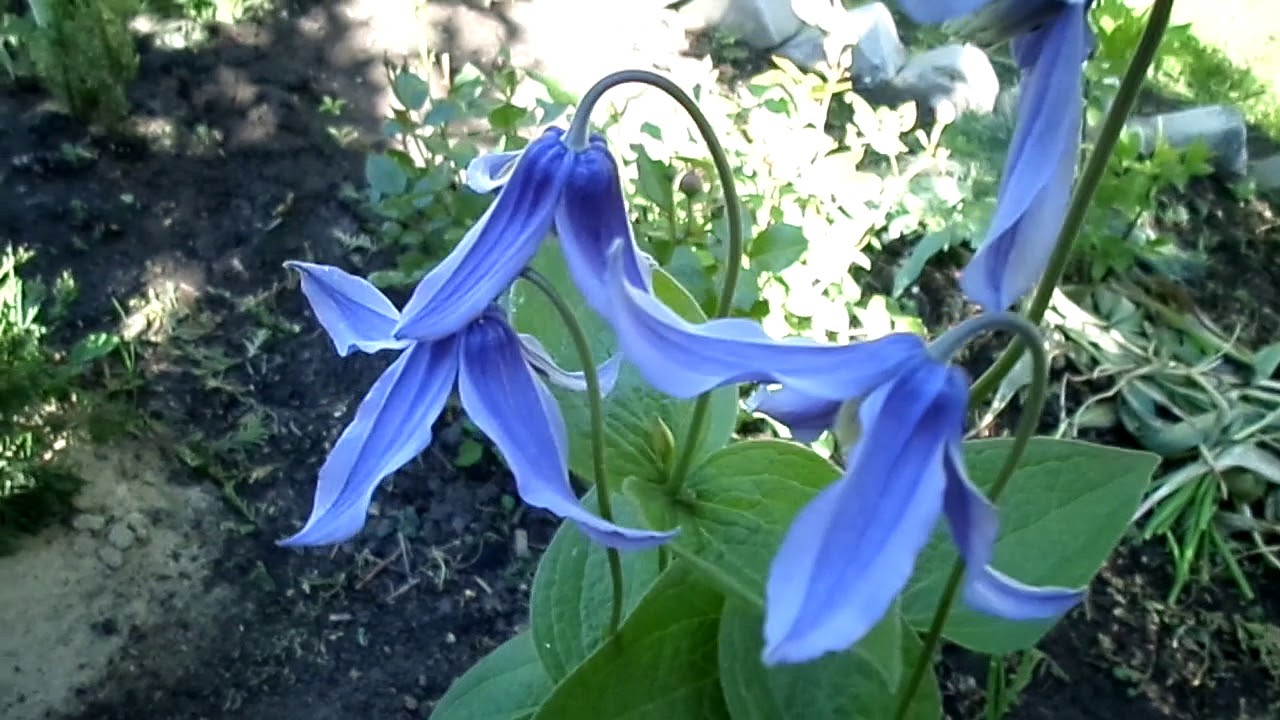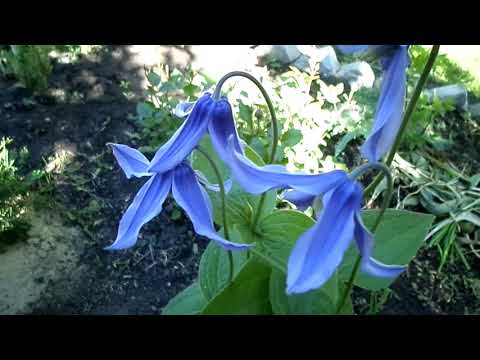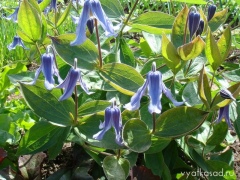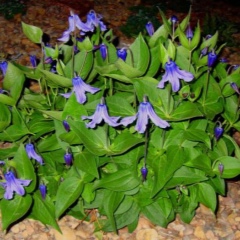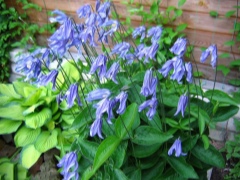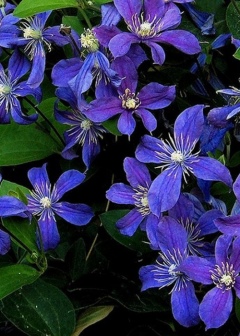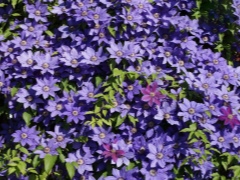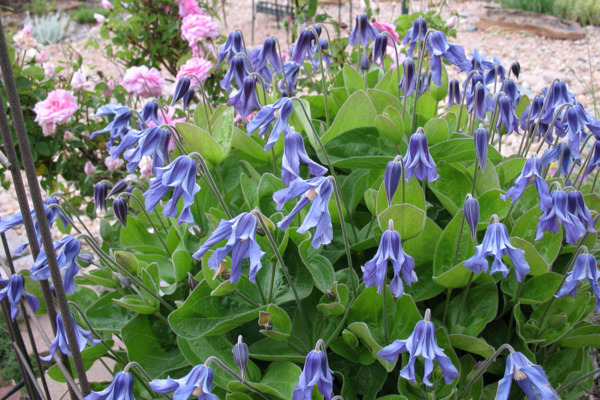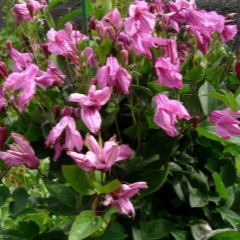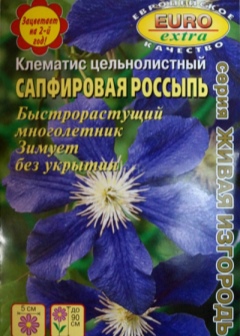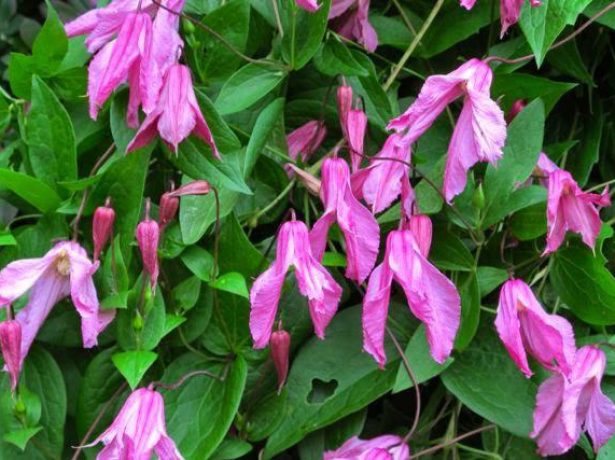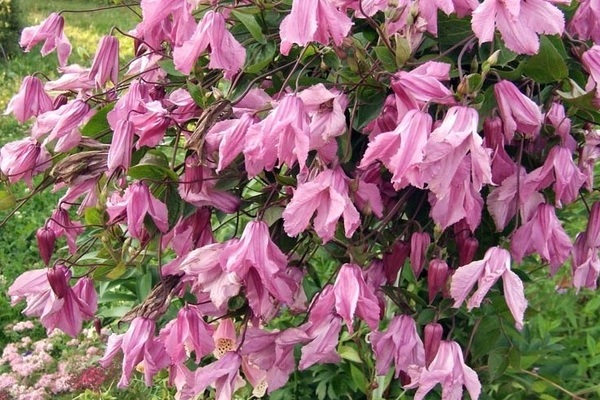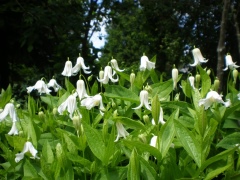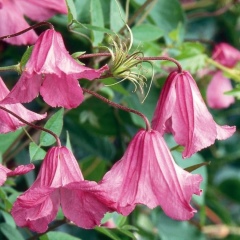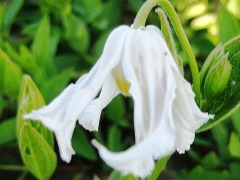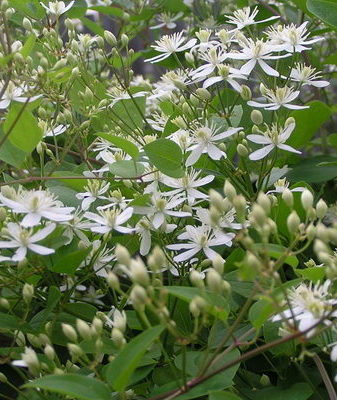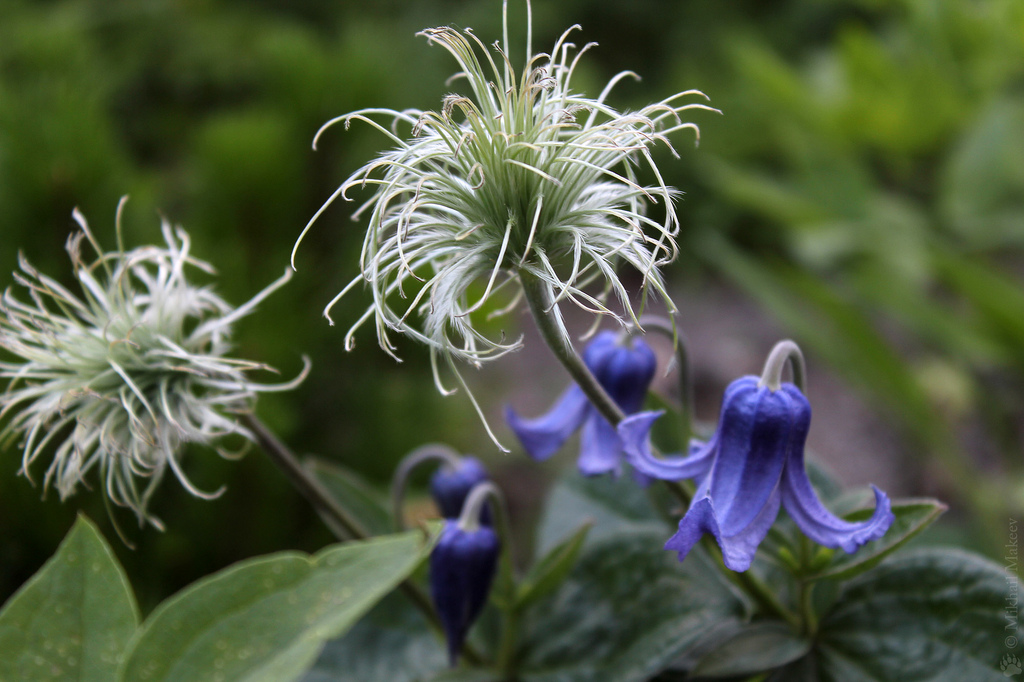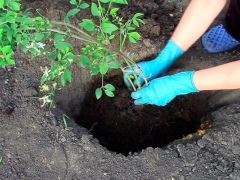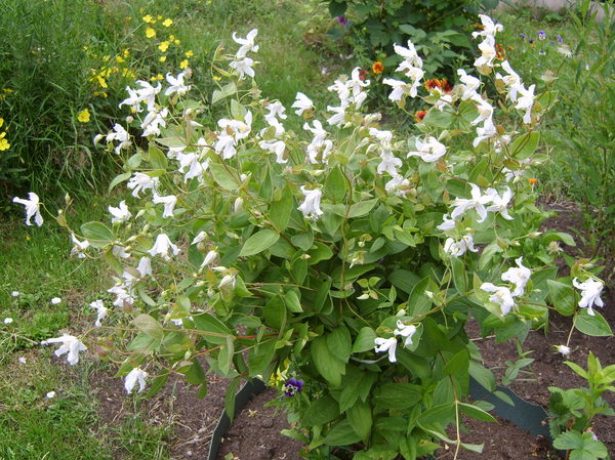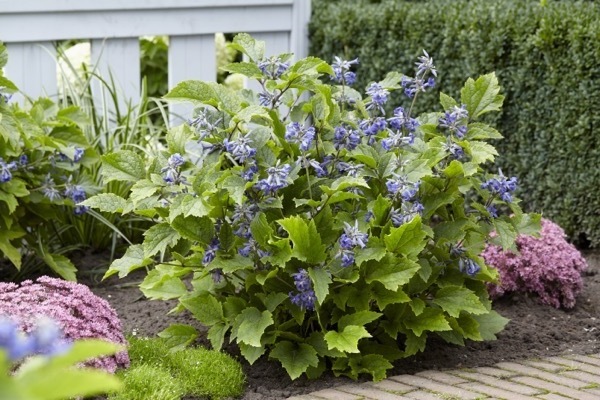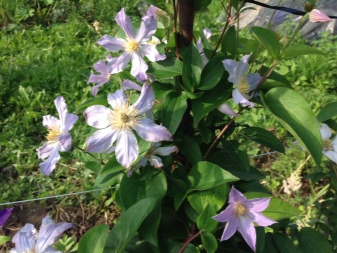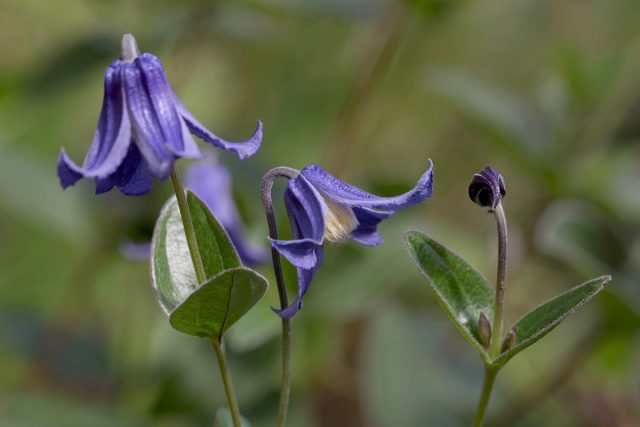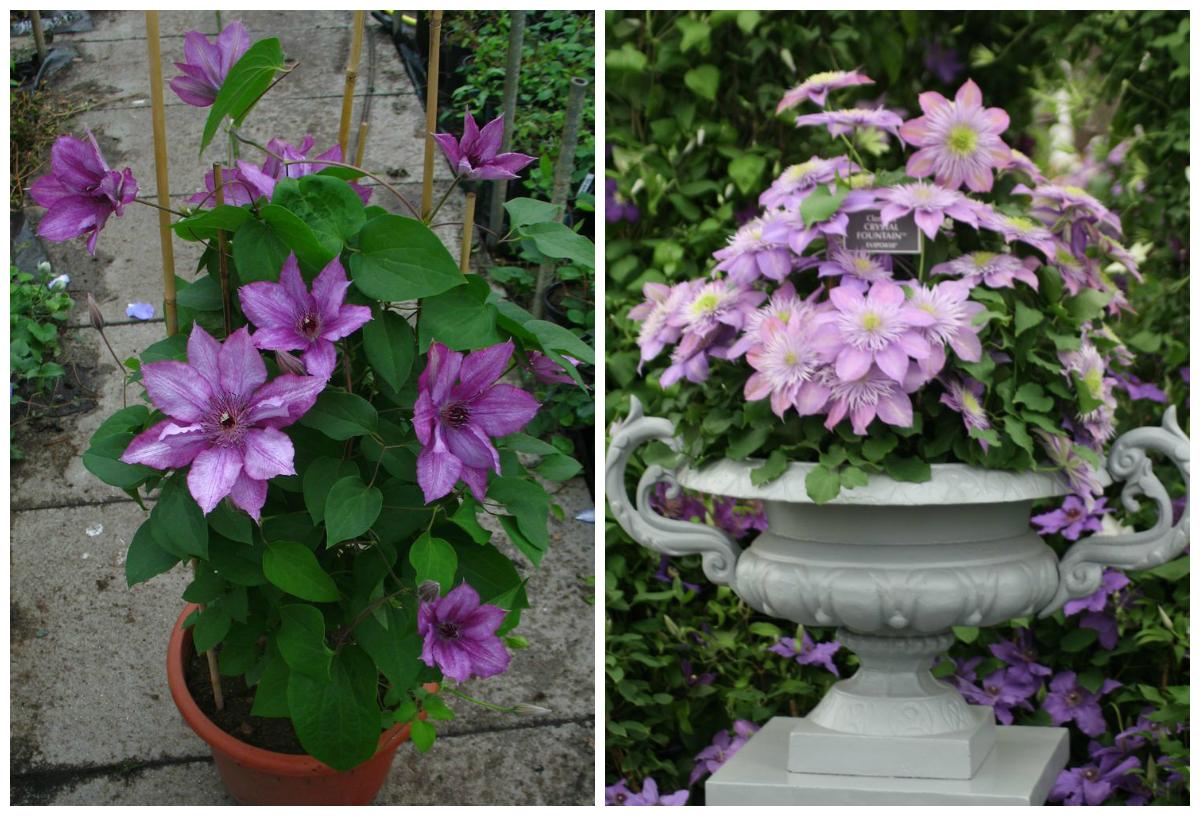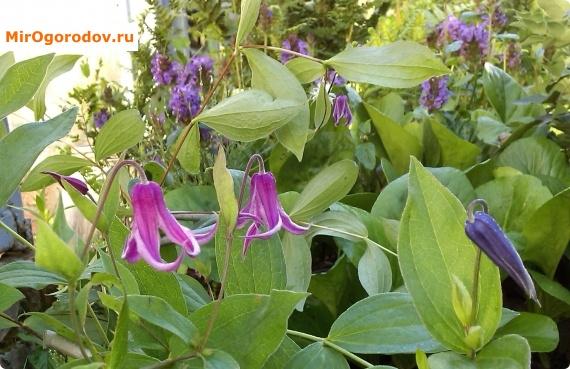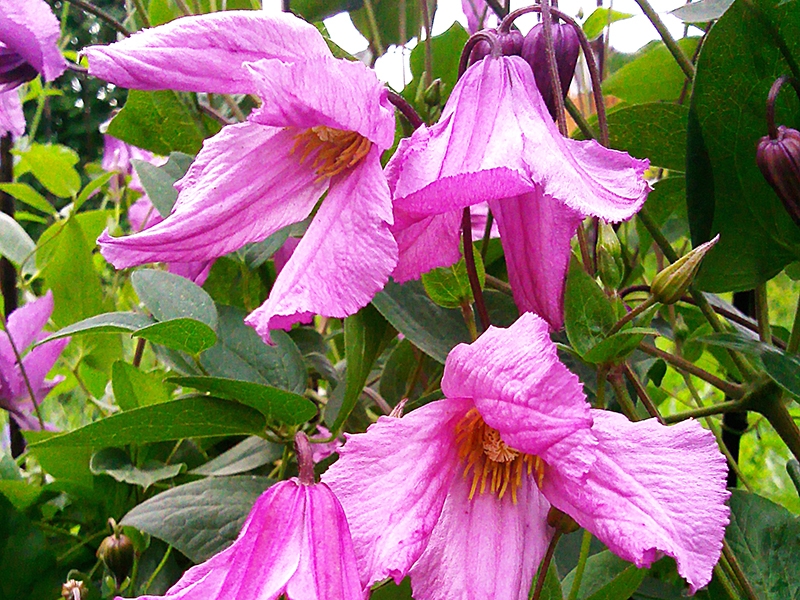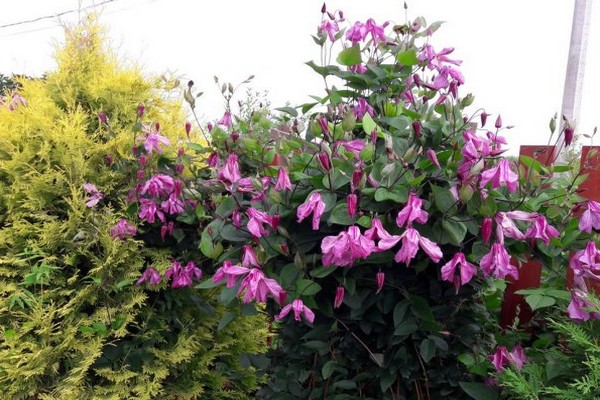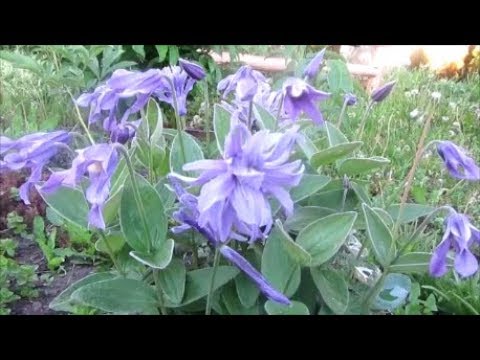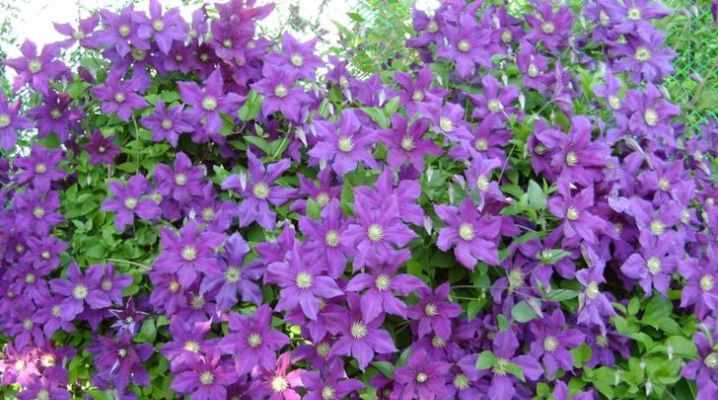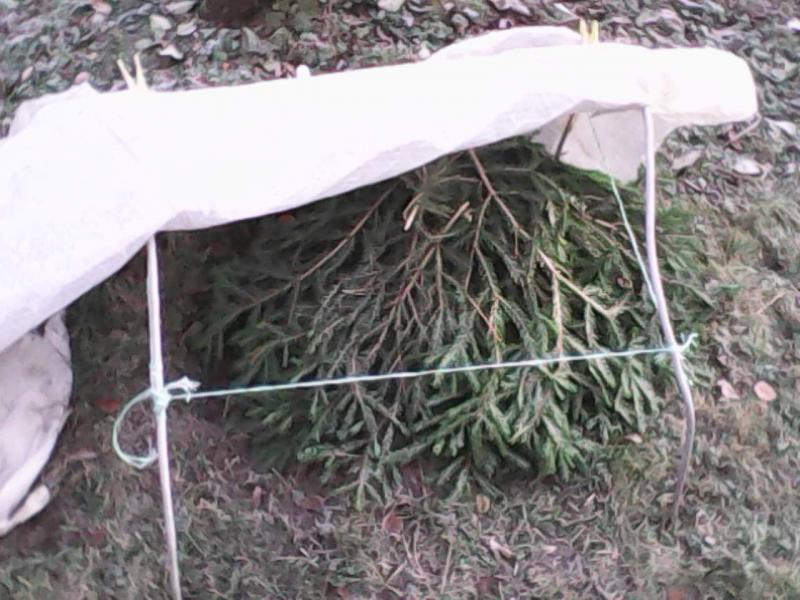The soil
Another important element in the cultivation of clematis is the soil. Most species require fertile soil, loose, light and deeply dug. The culture does not tolerate acidic, heavy and damp soils. Prefers neutral acidity, so check the pH and add lime or chalk if necessary.

These shrub vines absolutely do not tolerate drought and overheating of the roots, so it is advisable to mulch the soil around the plant with compost or bark. This is a great way to avoid drying out and overheating, as well as additional protection for the root system during winter.
It is also a good idea to plant short crops at the base of the stems, such as alyssum, arabis, lavender, doronicum, short daylilies.
Reproduction of clematis
Reproduction of species clematis is possible by seeds and vegetatively, varietal - only vegetatively. Manchu and burning species, the cultivation and care of which are considered the most simple, can be propagated by seed in a seedling way. Such plants bloom in the second or third year, if the care is correct. To preserve varietal characteristics, cuttings or division of the bush are usually used.
Large-flowered varieties reproduce well by cuttings in late spring. During this period, the plants are in a state of budding - this is an indicator of the readiness of the shoots. It is better to harvest them in the morning, when there is a larger supply of water in the branches. Cut them with a sharp secateurs, cutting into cuttings with one internode. Then bundles of 25 are tied and placed in a solution of a root formation amplifier - green for 18 hours, and lignified - for a day.

After that, the cuttings are rinsed in running water, planted in boxes with a peat-sand mixture (2 to 1) obliquely, with deepening, watered and covered with sawdust. You can put boxes in a greenhouse in a shaded place. Care consists in watering the cuttings for the first month 3 times a week, and then every day. Shoots take root after 6 weeks. Seed propagation is a more complex process, since in central Russia they rarely set, and with this method varietal characteristics are not transmitted.
Conclusion: clematis are beautiful plants, many of the varieties are frost-resistant and do not require special shelter for the winter. There are many species, forms and varieties, which are conventionally divided into groups according to the degree of pruning and on the maternal line. These shrubs can bloom on branches of the past or this year, and some species on both.
Reproduction is possible by dividing the bush, seeds, cuttings, grafting. Vegetative methods are used more often, since all the decorative qualities of the mother plant are preserved. One of the best options is grafting. Care consists of watering, feeding, proper pruning and winter shelter if necessary.
Planting clematis
The most popular in the middle lane are small-flowered species - bush Manchurian and burning, which tolerate the cold much better than others, they do not need to be covered, they bloom on the branches of this year. Growing and caring for these clematis in the country does not require special skills. Of the large-flowered varieties in the open field, Multi Blue, Purpurea Plena Elegans (Purpurea Plena Elegans), Piilu (Piilu) are often grown. Many of them bloom twice a year. These plants are light-requiring and prefer an open area, but they can tolerate a little shade.
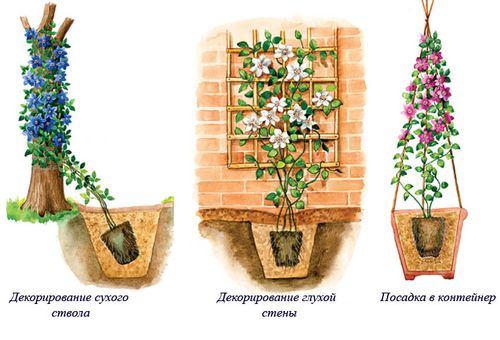
Planting and growing clematis is done in almost any soil, but they like a neutral or slightly acidic reaction. Acid ones need to be limed.Swampy and clayey soils are not at all suitable, this has a bad effect on the root system. Better to use a nutritious loamy substrate. The main parameter is moisture capacity. This flower prefers moderate humidity, without stagnant water. When the soil is clayey in the country, sand and peat are added to it. In dry sandy ones, it is necessary to add humus, peat or decayed leaves.
You can grow these vines with a closed root system, but drainage should be placed at the bottom of the pot or container. Before planting clematis, you need to dig a hole 60 cm in diameter and deep. If you plan to plant clematis in soils where there are few nutrients, it is better to make it wider to apply organic fertilizers. When the soil is dense, clayey, drainage from crushed stone or coarse sand should be placed on the bottom to prevent rotting of the root system.
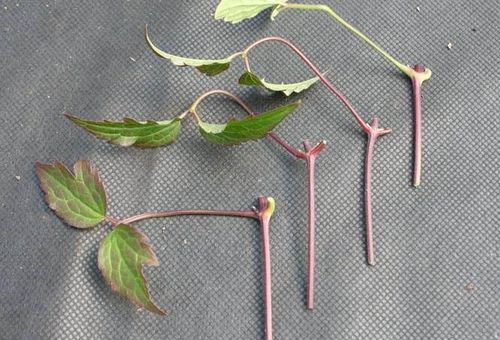
How to plant clematis correctly? Before planting, the shoots are cut to the second pair of buds. If the seedling was in a container or elsewhere, planting should be 10 cm deeper than before. The grafted plants are also buried so that the graft site is underground. A small depression is left around the seedling, where soil is then added when the clematis grows up. The land around is a little compacted, watered. The shoots are tied up, giving them a direction, otherwise they will intertwine chaotically, lose their decorative effect and it will be more difficult to care for them.
Planting and care rules
Alyonushka growers acquire seedlings of botanical clematis in autumn and spring. If the seedling was purchased in late autumn, and there is no way to transplant it directly into the open ground, you can save it until spring. The plant should be buried in a small box or flower pot and lowered into the basement, where the regular temperature is + 2˚ + 4˚C. The seedlings should be checked and moistened regularly. In the spring, at the beginning of May, you can plant flowers in a permanent place.
Clematis Alenushka loves well-lit places, protected from harsh gusts of wind. You can plant Alyonushka in partial shade, so that her delicate purple bells do not fade in the bright sun. Liana does not like stagnant water. Therefore, you should not plant a plant where melt and rainwater accumulates. Also, you should not plant it close to fences and walls. The minimum distance to them should be 40-50 cm.
Clematis varieties Alenushka loves fertile, light soil. It thrives on loamy, drained areas.
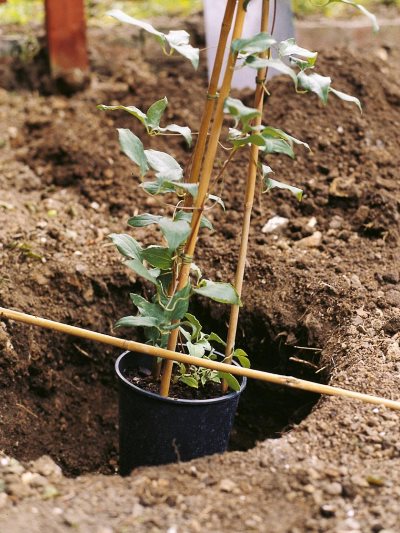
The landing pit for clematis Alyonushka is prepared in advance. The optimal size is 60x60x60 cm. Drainage is placed on the bottom so that moisture does not stagnate at the roots. Humus and sand are added to the soil taken out of the pit. A little ash, superphosphate, lime, 150-200 g each are introduced.
The soil with additives is mixed and poured into a pit in the form of a mound, on which the roots of clematis are located. Gradually cover the root system with the prepared mixture. Young clematis Alyonushka is buried by 10 cm, mature by 15 cm. Planting flush with the surface will not allow vines to show decorative qualities, tillering will not develop, the plant will not tolerate unfavorable conditions. When planting, the pit is not filled up by 8-10 cm.
As soon as the shoots become woody, the pit can be gradually filled up. Flowers are watered, and the planting site is mulched with humus or peat.
No plant can be grown without proper care. And each flower reacts in its own way to seemingly simple activities such as watering, feeding or pruning.
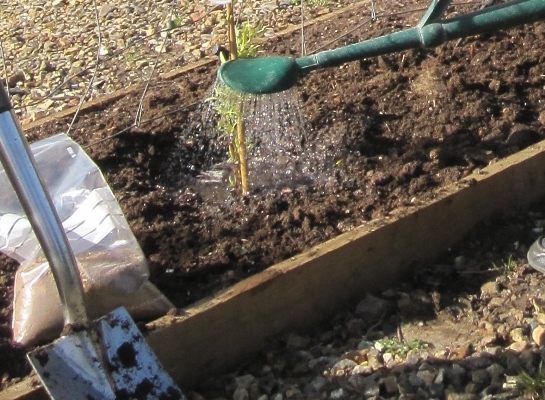
Clematis variety Alyonushka is very fond of watering. You need to moisten the flower garden 1-2 times a week, and at least 2-3 times a week in dry weather. For 1 young clematis bush, about 10-15 liters of water will be required, but to water a mature plant - up to 20-25 liters.
After watering, it is advisable to loosen the soil under the bushes well. A couple of weeks after planting, the soil can be mulched.For this purpose, needles, peat and other material that allow moisture to pass through are used.
When growing clematis Alyonushka, do not forget about weeding. Weeds not only spoil the appearance of the flower garden, but also contribute to the development of diseases.
Clematis Alenushka responds very well to regular feeding. In the year of planting, you do not need to additionally fertilize the flowers, since it will have enough of those nutrients that are contained in the soil.
In the second year after planting, fertilizers are applied at least 4 times throughout the growing season. It is necessary to alternate mineral and organic feeding. It is better to use special complex formulations as mineral fertilizers for clematis Alyonushka. For organic fertilization, you can prepare a mullein.
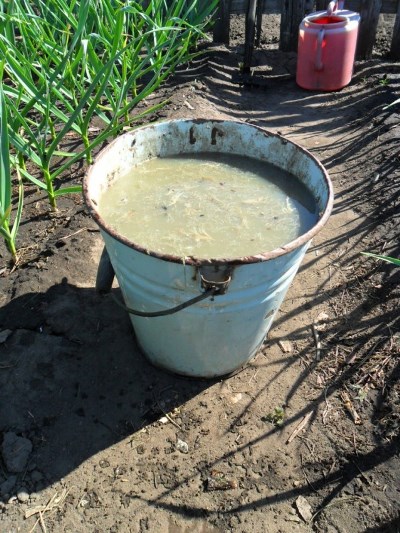
In the spring, it is useful to water the soil under the clematis with a solution of milk of lime. During the period of bud formation in clematis, it is useful to add potassium dressing. During abundant flowering, it is not necessary to additionally fertilize the Alyonushka variety.
When growing clematis of this variety on a support, the growing shoots must be tied up periodically. Without a garter, the shoots will simply lie on the ground, and the splendor of the flowering can hardly be fully appreciated.
On a note!
On a note! The Alyonushka variety can also be grown in containers. But it should be borne in mind that the height of the container must be greater than the width. The minimum volume of the container is 20 liters. Care will be the same as for outdoor cultivation. The only exception is more frequent watering.
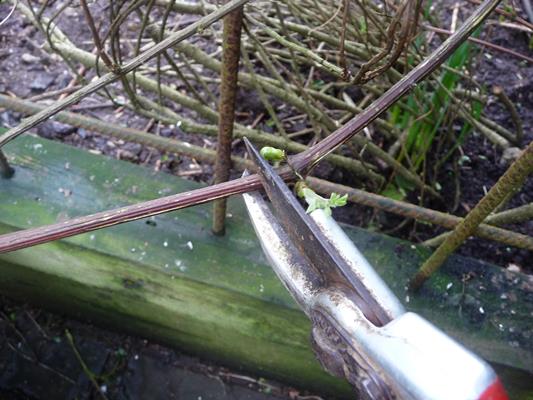
In the fall, clematis Alyonushka is prepared for wintering. Considering that the plant belongs to the third pruning group, all shoots must be pruned, leaving at least 3-4 buds. The root collar can be treated with copper sulfate to protect the flowers from possible diseases. From above, the shoots are well mulched with peat or humus, which will create additional protection for the roots.
Step 1 - stratification and sowing clematis seeds
Since medium and large seeds of clematis germinate for a rather long time and uncommonly, they must first be prepared for sowing - stratified. It should be noted that this process is lengthy and takes approximately 90 days. Therefore, if you decide to plant clematis seedlings in open ground in late spring, then seed preparation should be started in mid-November - early December.
After cold stratification, seeds emerge 10-20 days after sowing
In early spring, clematis seeds are sown in a container with a soil mixture consisting of equal parts of peat, sand and garden soil and sprinkled, then the soil must be rolled up. Remember that the sowing depth of seeds depends on their size, for example, large ones deepen 2 cm, medium ones - 1 cm.Further, the container with soil mixture must be kept at a temperature of 0 to 5 ° C for several months (for example, in a refrigerator or in a garden under the snow with a layer of about 20 cm). Seeds of medium size are enough to stratify within one month, and for large seeds it will take at least three. After that, the containers with the crops are placed in a warm place and until the emergence of seedlings, make sure that the soil is constantly moist (but not wet!).
Stratification of perennial seeds - detailed instructions with a photo
The most effective ways to stratify the seeds of various ornamental crops.
If you decide to stratify your clematis seeds in the snow, be sure to protect them from rodents with a fine mesh or a sturdy plastic container.
When there is no time for stratification, the germination of clematis seeds can be increased by soaking (for 5 days), while the water must be changed every 3-4 hours. After that, the seeds must be bubbled for a week. And it is enough to soak small seeds for several days before sowing.
At the end of the preparatory work, clematis seeds are sown in boxes or pots with a fertile substrate and placed in a room with an air temperature of 21-25 ° C on a lighted windowsill and watered regularly. After the first shoots appear, they need to provide good lighting and at the same time protect them from direct sunlight.
Features of growing in the Urals
Clematis is an attractive plant that is suitable for vertical garden landscaping. The twining branches perfectly highlight the beauty of roses and other flowering plants.The birthplace of clematis, or as it is also called in Latin Clematis, is Asia, Europe, North and South America, Australia. This plant belongs to the buttercup family.
About 300 varieties of clematis can take root in the garden of ordinary people. This type is used to decorate fences, gazebos, arches, etc. The rest of the varieties need careful care. They are botanical varieties. Among summer residents and owners of personal plots, hybrids with large flowers are very popular.
Clematis can bloom in spring, summer and fall. It all depends on the variety. Pruning of these plants is related to the flowering time. For example, autumn varieties require pruning in the spring, others in the fall. Absolutely all varieties of clematis grow like this: the root and root parts should be in the shade, and the rest in the sun.
Liana has stems (they grow stiff over time) and flexible shoots. There are bush forms (up to 1.5 m), and there are curly ones (over the summer they grow up to 3 m). The plant is perennial and is distinguished by trifoliate, ovate, linear-lanceolate, and also simple leaves. The length of the leaves ranges from 4 to 10 cm, depending on the species.
Flowers differ in different colors and large sizes. They can reach 20 cm. There are also small-flowered clematis. But they are less popular, since not all species take root well in a particular environment and have some high requirements for growing.
Based on general information, it becomes clear that clematis can grow well in the Urals, and even more so in the South Urals. It is necessary to discard the statements that clematis grow only in warm places. They perfectly tolerate low temperatures. To grow thermophilic flowers in harsh conditions, where there is uneven rainfall and there are sharp changes in temperature, you just need to choose a variety that has been adapted by breeders to adverse weather conditions.
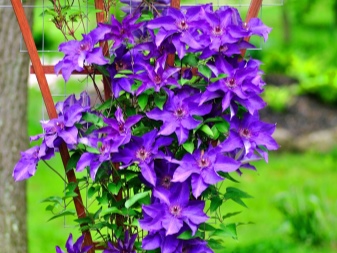
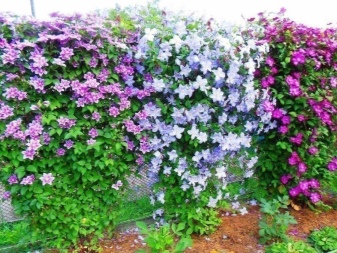
Conditions required by the rulers
It is not easy to find a soil that ideally suits the needs of the rutniks. Almost every species has its own soil type preferences, and some rutniks require radically different soil types. The only general requirement is soil fertility and texture.
Rutovniks for the most part adore soils rich in humus with a sandy-rocky structure. When laying drainage, they develop well on any sandy loam and loam with a sufficient level of nutritional value. Most rutnik species prefer moist soils. It is vital for them to choose a calcareous type of soil that provides the presence of calcium. Only the coriander-leaf ruta categorically does not tolerate calcium and is used to acidic soils.
Beautiful flowers perfectly tolerate partial shade and bloom best in light shade. The coriander leaf rut can be grown in the sun, but it is better not to place other species in direct rays.
When choosing a place for planting rutniks, it should be borne in mind that these plants do not like heat very much, especially in summer, when their leaves literally burn out. Rutovniks are best placed in the coolest places, in locations with a partially northern orientation, in the company of large boulders or stone walls, which give coolness even in July.
Clematis whole-leaved bush description
Under the word, "clematis" many understand a vine. Perhaps that is why the whole-leaved clematis, so unlike the "classics", is not very popular with us. His homeland is Central and Eastern Europe and the Far East. Throughout the summer, the shoots are crowned with a mass of bell-shaped flowers (they are blue in the natural form). They are replaced by spectacular seed caps. According to the international classification, the varieties and forms of clematis whole-leafed belong to the Integrifolia group.
Minimal care plant
All forms and varieties of clematis whole-leafed are extremely frost-resistant and unpretentious. They are not so demanding on the soil, grow both in the sun and in partial shade and are distinguished by excellent health.However, they should not be planted in places of jamming.
These clematis bloom on the shoots of the current year and belong to the third pruning group. In the fall, they are cut to the base or above the second or fourth pair of buds, from which new shoots can form in the spring. It's not too late to do pruning in the spring.
• For clematis to bloom for a long time, cut off wilted flowers. This stimulates the formation of new shoots with buds.
• If you want to get flowers of saturated shades, during budding and before flowering, carry out foliar feeding on the leaves with magnesium-containing preparations.
• Water once a week, 15 liters per mature bush.
Place in the garden
Unlike lianas, clematis whole-leaved does not have twining leaf petioles, which provide reliable attachment to the support. Due to the unstable shape of the bush and thin shoots, you should take care of the obelisk or ring support. They will prevent the plant from breaking under the weight of the flowers and will give it a well-groomed look. Low varieties can be planted between shrubs, including between roses. These clematis can be placed in a mixborder.
Reproduction
It is enough to simply propagate varieties of clematis whole-leafed by cuttings. The best time is mid-June, when the shoots become slightly coarse. Cuttings with two pairs of leaves (the lower pair are removed) are planted in a constantly moist substrate, deepening along the upper pair of leaves. It is necessary to provide shading and high humidity. The roots will appear in a month and a half. For the winter, it is better to cover young cuttings or place them in the basement (in this case
they are rooted in pots). This recommendation is relevant for regions of the 3-4th climatic zones.
Species and natural forms can be grown from seeds or propagated by cuttings.
There are a number of hybrids resulting from the crossing of clematis whole-leafed and purple (C. viticella). They belong to the Diversifolia group (C. x diversifolia), according to the international classification, it is part of the Integrifolia group. The appearance of these clematis combines the herbaceous nature of the first with the powerful growth and energy of the second "parent". These are tall bushes with long graceful shoots, which have lost or weakened the ability to twine around the support - they need to be tied up. Flowers appear at a height of 0.5-3 m. Shrub roses, hydrangeas, viburnum are excellent supports for such clematis.

